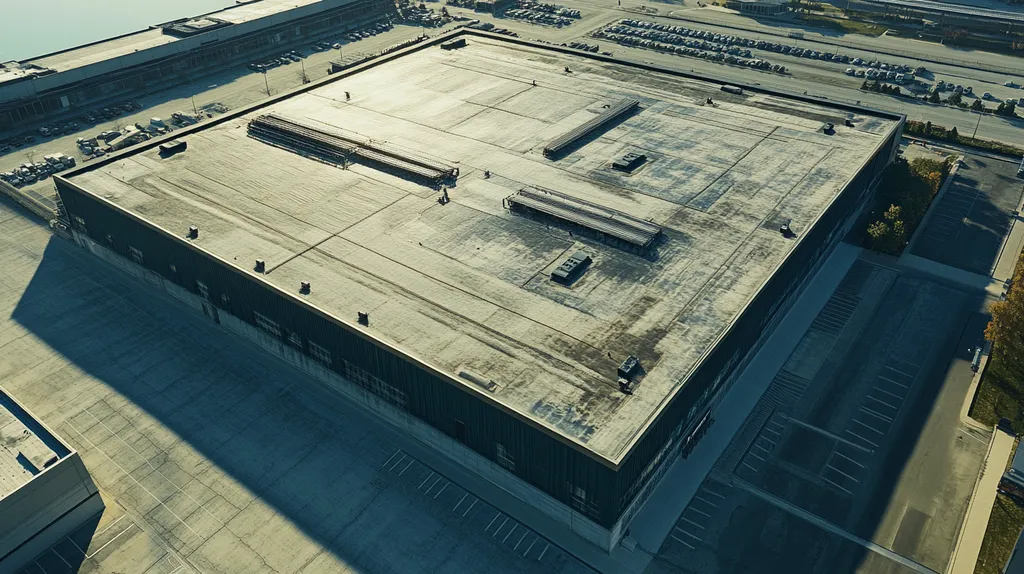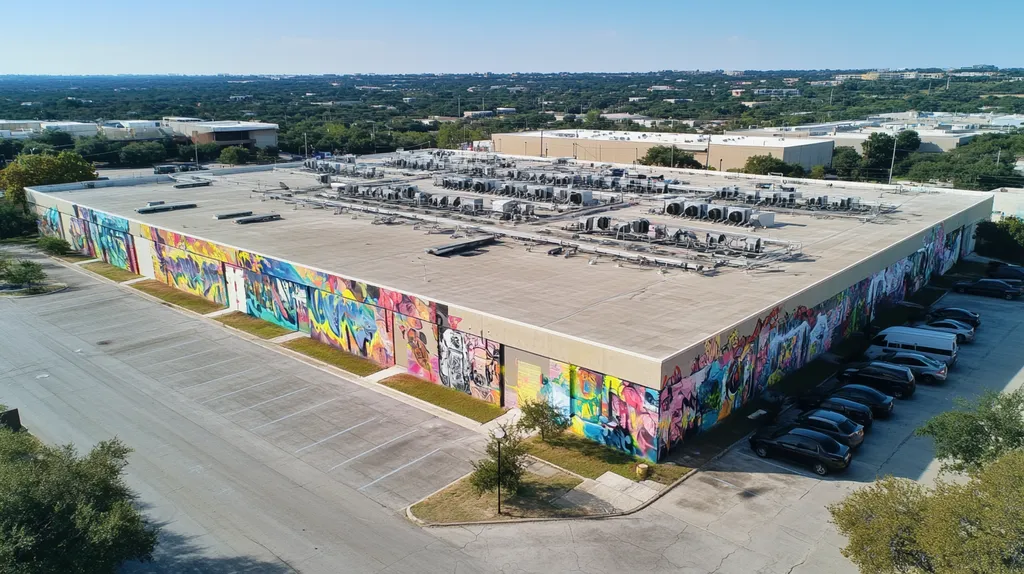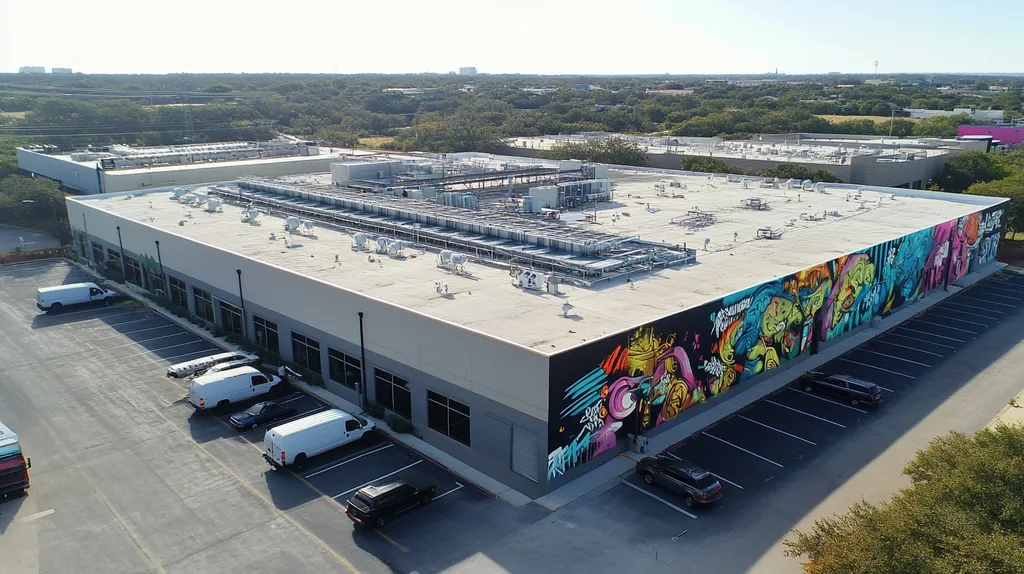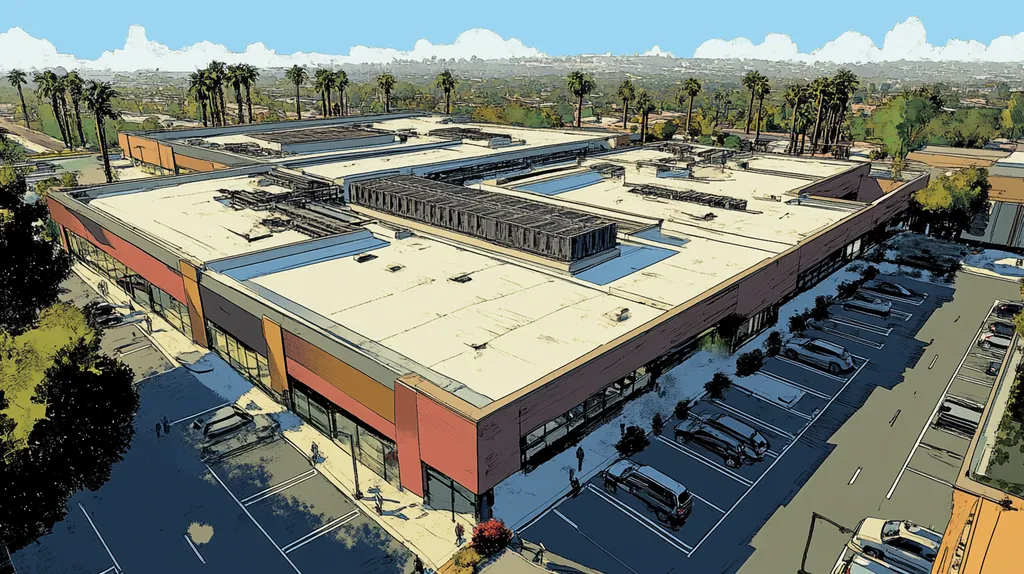In today’s competitive commercial real estate market, a poorly planned roof coating project isn’t just an inconvenience – it’s a financial time bomb. With energy costs soaring 23% year-over-year, property managers can’t afford to ignore the ROI potential of modern coating systems.
From slashing cooling expenses by up to 30% to extending roof life by 15+ years, the right coating strategy transforms your building’s biggest liability into a revenue-generating asset. But without proper ROI analysis, that promising coating project could become a costly mistake.
This comprehensive guide breaks down the essential components of coating ROI calculation, empowering property managers to make data-driven decisions that maximize returns while minimizing risks.
SECTION 1: FUNDAMENTAL CONCEPTS
Picture your commercial roof as a silent financial superhero, quietly saving (or costing) you thousands of dollars every day. While it’s busy battling UV rays and deflecting rain, your roof coating choice could be the difference between a building that’s a money pit and one that’s a profit powerhouse. With commercial building operators spending up to 30% of their operating budgets on energy costs alone, understanding the financial impact of roof coatings isn’t just smart – it’s essential for survival in today’s competitive market.
Understanding Return on Investment (ROI)
Let’s make ROI as easy as pie – it’s simply what you get back compared to what you put in. Think of it as your roof’s report card, showing exactly how well your coating investment is performing.
The cost method offers a straightforward way to calculate your coating’s ROI by comparing your property’s increased value against your total investment. For example, if a $300,000 coating project increases your property value by $500,000, you’re looking at a tidy return. (source: Commercial Real Estate Loans)
But here’s where it gets interesting – roof coating ROI isn’t just about property value. It’s like a financial snowball that keeps growing as you factor in reduced maintenance costs, extended roof life, and those sweet, sweet energy savings.
Think of ROI calculation as your financial GPS – it helps you navigate between different coating options and avoid expensive wrong turns.
Defining Key Cost Factors
Choosing a roof coating is like picking a smartphone plan – the cheapest option isn’t always the best deal. Your total cost puzzle has several pieces that need to fit together perfectly.
First up is the coating material itself. Like choosing between economy and premium gas for your car, higher-quality coatings might cost more upfront but can deliver better mileage in the long run.
Installation costs are your next big-ticket item. Skimping here is like hiring a rookie mechanic for your luxury car – it might save money today, but tomorrow’s repair bills could give you heartburn.
Don’t forget the ongoing maintenance dance! Some coatings need constant attention like a high-maintenance pet, while others are more like cacti – tough and low-maintenance.
Calculating Energy Efficiency Gains
Here’s where roof coatings really shine – literally! A good coating turns your roof into an energy-saving champion, reflecting sunlight like a disco ball reflects light (but way more professionally, of course).
Modern reflective coatings can reduce roof surface temperatures by up to 50 degrees Fahrenheit. That’s like giving your air conditioning system a superhero sidekick, fighting heat before it ever reaches your building.
The savings show up faster than you might think. Many buildings see their cooling costs drop by 15-25% after applying energy-efficient coatings, turning your roof from an energy vampire into an efficiency virtuoso.
Don’t forget about those government incentives! Uncle Sam and local utilities often offer rebates and tax breaks for energy-efficient upgrades, making your ROI even sweeter.
SECTION 2: SYSTEM COMPONENTS
Think of your roof coating system as a high-stakes game of Jenga – each component needs to work perfectly with the others, or the whole thing could come tumbling down. While 82% of facility managers focus solely on coating material costs, it’s the hidden system components that often determine success or failure. Let’s decode this roofing puzzle and explore how proper material selection, meticulous preparation, and compatibility awareness can transform your coating project from a gamble into a guaranteed win.
Coating Types and Materials
Welcome to the coating buffet, where your choices range from budget-friendly acrylics to premium silicones. Like choosing between economy and first-class airline tickets, each option comes with its own perks and limitations.
Acrylic coatings are the reliable sedans of the roofing world – affordable, easy to work with, and perfect for mild climates. They offer solid UV protection and typically cost 30-50% less than premium alternatives.
Silicone coatings are your luxury SUVs – they laugh in the face of ponding water and extreme weather. While they command premium prices, their superior durability often justifies the investment in challenging environments.
Polyurethane coatings serve as the sports cars – high-performance options that offer exceptional impact resistance and flexibility. They’re ideal for roofs with heavy foot traffic or mechanical equipment.
Commercial roof coatings can extend roof life while reducing replacement costs, with energy efficiency improvements leading to substantial cooling cost reductions. (source: SmartSeal)
Roof Surface Preparation Needs
Think of surface prep as making your bed before putting on fresh sheets – skip this step, and nothing else matters. A properly prepared surface can double or triple your coating’s lifespan, while poor prep virtually guarantees failure.
Start with a thorough cleaning that would make your grandmother proud. Power washing removes dirt, debris, and oxidation that could prevent proper adhesion, but remember – this isn’t your weekend driveway project.
Next comes the detective work – identifying and repairing any existing damage. Those tiny blisters or cracks you’re tempted to ignore? They’re like tiny time bombs waiting to compromise your new coating system.
Moisture testing is your final safety net. Using infrared scanning and core samples helps identify trapped moisture that could turn your roof into a giant blister factory after coating.
Adhesion and Compatibility Issues
Playing matchmaker with your roof components is crucial – not all coatings get along with all surfaces. It’s like introducing your high-maintenance friend to your laid-back buddy – sometimes it works, sometimes it’s disaster.
The golden rule? Never assume compatibility. That bargain coating might look great on paper, but if it can’t stick to your existing roof surface, you’re throwing money into the wind.
Temperature and humidity during application can make or break adhesion success. Too hot, too cold, or too humid, and your coating might decide to play hard-to-get with your roof surface.
Field adhesion testing isn’t optional – it’s your insurance policy against coating failure. A simple pull test before full application can save you from discovering compatibility issues when it’s too late to fix them.
SECTION 3: IMPLEMENTATION METHODS
Your roof coating project is like conducting an orchestra – timing, technique, and teamwork must align perfectly for a masterful performance. While the right coating can extend your roof’s life by 15+ years, poor implementation can turn your investment into an expensive lesson in what not to do. Let’s explore how proper application methods, environmental awareness, and strategic scheduling can transform your coating project from a potential disaster into a revenue-generating masterpiece.
Application Techniques and Tools
Think of roof coating application like frosting a giant cake – your technique and tools can make the difference between a smooth, protective finish and a lumpy mess. Spray systems are your power players for large areas, while rollers and brushes excel at detail work and smaller projects.
Your coating arsenal should include more than just application tools. Quality thickness gauges, moisture meters, and surface preparation equipment are like your roofing GPS – they help ensure you’re heading in the right direction with proper coverage and adhesion.
The prep work dance is crucial – imagine trying to paint a car without sanding it first. Power washing, patching, and priming aren’t optional steps; they’re your insurance policy against coating failure.
Temperature and humidity monitoring tools are your weather forecasters on the roof. They help ensure your coating cures properly instead of becoming a sticky mess or failing to adhere.
Environmental Considerations
Your roof is like a temperature-sensitive artist – it needs just the right conditions to create its best work. Coating application sweet spots typically fall between 50-90°F, with relative humidity below 85%.
Think of dew point as your coating’s worst enemy. Applying coatings too close to the dew point is like trying to paint in the rain – it’s a recipe for adhesion problems and coating failure.
UV exposure plays both hero and villain in your coating story. While some coatings cure better with sunlight, others need protection from intense UV during application.
Local climate patterns should drive your coating choices and application timing. A coating that works beautifully in Phoenix might fail miserably in Seattle.
Project Planning and Scheduling
Your coating project timeline should be like a well-choreographed dance, with each step flowing smoothly into the next. Start with weather forecasting – picking your application window is like choosing the perfect day for an outdoor wedding.
Coordinate your coating project like a military operation. Building occupants, maintenance staff, and contractors all need to know their roles and timing to prevent costly disruptions.
Smart scheduling means considering your building’s peak usage times. Applying coatings during your facility’s quiet periods is like performing road work at night – it minimizes impact on daily operations.
Evaluating the ROI of commercial roof coatings requires understanding how proper implementation impacts long-term performance through reduced maintenance needs and improved energy efficiency. (source: Cipollini Roofing)
Build buffer time into your schedule like you’re planning a space launch – unexpected weather delays or surface preparation issues shouldn’t derail your entire project timeline.
SECTION 4: MAINTENANCE REQUIREMENTS
Your commercial roof coating is like a high-performance athlete – it needs proper training, regular check-ups, and the right nutrition to stay in peak condition. While a coating can slash your energy bills by 25% and add decades to your roof’s life, neglecting maintenance is like expecting your car to run forever without oil changes. Studies show that properly maintained roof coatings last twice as long as neglected ones, turning your smart investment into a financial home run.
Regular Inspection Protocols
Think of roof inspections like dental check-ups – catching small issues early prevents painful, expensive problems later. Smart facility managers schedule comprehensive inspections at least twice yearly, focusing on high-stress areas like drainage points and seams.
Your inspection checklist should be as detailed as a pilot’s pre-flight routine. Look for coating wear patterns, ponding water spots, and any signs of adhesion failure – these are your early warning system for potential problems.
Document everything like you’re collecting evidence. Photos, measurements, and detailed notes create a powerful maintenance history that helps predict future needs and justify budget requests.
Don’t forget those often-overlooked spots where trouble loves to hide. Penetrations, flashings, and roof edges need extra attention, like checking behind your ears during a shower.
Coating Reapplication Strategies
A lifecycle economic analysis of commercial roof coatings shows that strategic reapplication planning can dramatically extend your roof’s lifespan while maximizing energy efficiency benefits. (source: SmartSeal)
Time your reapplication like a chess master plans their moves. Most coatings need renewal every 5-10 years, but local climate and usage patterns might shrink or stretch this window.
Consider reapplication as preventive medicine rather than emergency surgery. Planning ahead lets you choose optimal weather conditions and avoid rush charges from contractors.
Layer your coating strategy like a cake – each application should build on the success of the previous one. This means thoroughly evaluating the existing coating’s condition before adding new layers.
Preventive Maintenance Practices
Your roof coating needs regular TLC like a prize-winning garden. Establish a cleaning schedule that removes debris before it can trap moisture or damage the coating surface.
Keep your drainage system flowing like a well-oiled machine. Clogged gutters and standing water are your coating’s archenemies, capable of undoing years of protection in just one season.
Create maintenance zones on your roof like a strategic game board. High-traffic areas and spots around mechanical equipment need extra attention and perhaps additional protective measures.
Build a maintenance calendar that accounts for seasonal challenges. Schedule major work during optimal weather windows, and increase inspection frequency during harsh weather seasons.
SECTION 5: PERFORMANCE METRICS
Your commercial roof is like a silent financial report card, quietly grading your building’s performance 24/7. While most property owners focus on flashy interior upgrades, their roof is busy conducting a high-stakes symphony of energy management, durability testing, and curb appeal performances. With buildings losing up to 30% of their cooling efforts through poorly performing roofs, understanding these metrics isn’t just smart – it’s essential for your bottom line.
Energy Efficiency and Cost Savings
Think of your roof coating as a financial force field, protecting your wallet from energy waste. Like a mirror reflecting sunlight away from your building, the right coating transforms your roof from a heat sponge into a cooling champion.
Commercial roof coatings are designed to provide additional protection, extend roof life, and dramatically improve energy efficiency through enhanced reflective properties. (source: SmartSeal)
Modern reflective coatings can slash surface temperatures by up to 80 degrees Fahrenheit – imagine your roof wearing the world’s most effective sunscreen. This temperature reduction translates directly to lower cooling costs.
Track your savings like a financial detective. Smart building managers monitor utility bills before and after coating application, often discovering cooling cost reductions of 20-30% in summer months.
Durability and Lifespan Assessments
Your roof coating is like a time machine for your building envelope – the right choice can transport your roof years into the future. Quality coatings can double or even triple a roof’s functional lifespan.
Think of durability testing as your roof’s regular health checkup. Simple tools like adhesion testers and thickness gauges help predict coating performance and prevent premature aging.
Weather resistance isn’t just about surviving storms – it’s about maintaining performance through countless cycles of heat, cold, rain, and UV exposure. Premium coatings flex and adapt like athletic wear, while budget options can become brittle like an old rubber band.
Map your coating’s aging patterns like a meteorologist tracks weather systems. Regular durability assessments help identify weak spots before they become expensive problems.
Aesthetic and Visual Evaluation
Your roof is your building’s billboard in the sky – what message is it sending? A pristine, well-maintained coating speaks volumes about your property management standards.
Color retention matters more than you might think. Like a faded car paint job, a discolored roof can make your whole building look tired and neglected, potentially impacting tenant satisfaction and property value.
Surface uniformity isn’t just about looks – it’s a performance indicator. Uneven wear patterns can signal underlying issues, while consistent appearance usually means your coating is doing its job.
Document your roof’s visual evolution like a proud parent tracking their child’s growth. Regular photos and inspection reports create a powerful record for planning maintenance and justifying future investments.
SECTION 6: OPTIMIZATION STRATEGIES
Think of your roof coating system as a financial chess game where every move counts. While 73% of building owners focus solely on initial coating costs, the real champions are playing three moves ahead. Your roof is silently orchestrating a complex dance between protection, performance, and profitability. Without the right optimization strategy, you might as well be throwing money off that roof instead of investing in it.
Cost Minimization Techniques
Think of your coating budget like a master chef’s ingredients – it’s not about using less, it’s about using everything wisely. Smart timing of material purchases can slash costs by up to 25%, especially when you coordinate with suppliers during their off-peak seasons.
Bundle your coating projects like a savvy holiday shopper. Combining multiple buildings or sections under one contract often unlocks bulk pricing discounts and reduces mobilization costs.
Turn your maintenance crew into coating detectives. Regular inspections and quick repairs cost pennies compared to emergency fixes, like catching a small leak before it floods your boardroom.
Calculating the return on investment (ROI) for quality commercial roofing involves considering various factors and long-term savings. (source: DC Roofing Brevard)
Performance Enhancement Methods
Your roof coating is like an Olympic athlete – proper training and conditioning make all the difference. Start with surface preparation that would make a drill sergeant proud – every dollar spent on prep pays back threefold in coating performance.
Deploy smart application techniques like a master painter. Multiple thin coats often outperform a single thick layer, just as several light meals are better than one huge feast.
Monitor coating performance like a doctor tracks vital signs. Regular thermal imaging and moisture surveys catch problems while they’re still small enough to fix without breaking the bank.
Think of your coating’s environment like a microclimate. Understanding local weather patterns and UV exposure levels helps you choose products that will thrive, not just survive.
Long-Term Value Maximization
Transform your roof coating from an expense into an investment powerhouse. Strategic planning of recoating cycles can extend your system’s life by up to 40%, turning what could be a costly replacement into a manageable maintenance program.
Play the energy efficiency game like a grandmaster. Light-colored, reflective coatings can slash cooling costs by up to 30%, paying for themselves faster than a solar panel installation.
Build your coating system like you’re constructing a financial portfolio – diversified and resilient. Combining different coating types for different roof areas maximizes performance where it matters most.
Document everything like you’re writing your coating’s biography. Detailed records of maintenance, repairs, and performance metrics become powerful tools for future optimization and budget justification.
The Bottom Line
With commercial energy costs projected to rise another 15% in 2024, the financial impact of roof coating decisions has never been more critical.
A properly calculated and executed coating project can slash cooling costs by up to 30% while extending roof life by 15+ years, generating ROI that transforms your building’s biggest liability into a powerful asset.
However, the 40% of property managers who skip thorough ROI analysis face potentially devastating consequences, from premature coating failure to missed energy-saving opportunities.
By mastering the six key components outlined in this guide – from fundamental concepts to optimization strategies – facility managers can confidently navigate coating decisions that deliver maximum value with minimum risk.
The future of commercial property profitability increasingly depends on making smart, data-driven coating investments today.
FREQUENTLY ASKED QUESTIONS
Q. What is ROI for a commercial roof coating?
A. ROI, or Return on Investment, is a measure of how much value you get back compared to your initial investment in roof coating. It’s like your roof’s report card, showing its performance in saving energy costs, reducing maintenance, and enhancing property value. Calculating this helps you determine whether your coating choice is financially sound.
Q. What components affect the ROI of an industrial roof?
A. The success of your roof coating system relies on various components, including the quality of coating materials, surface preparation, and adhesion between layers. These factors determine how well your roof protects against the elements and how long it lasts, directly influencing your ROI. Selecting compatible products and performing thorough prep work are crucial steps.
Q. What are the best practices for coating application on a commercial roof?
A. Proper application techniques are vital for achieving long-lasting results. Use the right tools, like sprayers for large areas and brushes for touch-ups. Ensure temperature and humidity are ideal to promote adhesion, and always prepare the surface thoroughly. Following these best practices guarantees you’re not just throwing money onto the roof!
Q. How often should I inspect my commercial roof coating?
A. Inspecting your roof twice a year is a smart strategy to catch potential issues early. Focus on areas prone to wear, like seams and drainage points. Keeping a detailed inspection record will help maintain your roof’s performance and extend its life while protecting your investment.
Q. What factors impact energy efficiency gains from roof coatings?
A. Factors like the type of coating used, surface preparation, and local climate significantly influence energy savings. Energy-efficient coatings can reflect sunlight, reducing roof temperatures and cooling costs. Monitoring your utility bills before and after coating application can reveal the effectiveness of your insulation and help maximize ROI.
Q. How can I optimize my commercial roof coating investment?
A. Optimize your investment by choosing the right materials, ensuring proper installation, and committing to regular maintenance. Monitor performance metrics like energy savings and longevity. Planning for recoating cycles and knowing when to seal cracks can significantly enhance your roof’s overall lifespan and performance, ensuring you’re getting the best value.
Q. What additional benefits do roof coatings offer beyond ROI?
A. Beyond financial returns, roof coatings safeguard structures from severe weather, enhancing durability and aesthetics. They also improve energy efficiency, leading to lower utility costs. Plus, many coatings have eco-friendly properties, reducing carbon footprints and contributing to sustainability initiatives, making them a win-win for commercial property owners!











